Venomous snakes are reptiles. Most venomous snakes in the world are distributed on the two sides of the equator. The types and quantity of venomous snakes decrease eventually towards the north or south. Taiwan is situated in the subtropics but the climate is warm and humid all year round. Its topography comprises of mostly mountain hills with dense forests. Such varying geographic environment inevitably breeds the highly valuable reptiles- snakes, in the ecological equilibrium. According to the publication issued by the Forestry and Nature Conservation Agency (former Forestry Bureau) in 2018, How to Co-Exist with Snakes – 16 Precautions for Dealing with Snakes1, there are 46 types of snakes on the land of Taiwan and 16 of them are venomous. Among them, bites from six types of venomous snakes are common and clinically hazardous to human. There six types include Naja atra under Family Elapidae, Bungarus multicinctus, Deiagkistrodon acutus under Viperidae, Protobothrops mucrosquamatus, Trimeresurus stejnegeri, and Daboia siamensis, known as the six major venomous snakes of Taiwan. These six types of venomous snakes vary in looks and it is easy to identify the similarities and differences from the photos of these six venomous snakes.
Naja Atra
Naja Atra are distributed all over Taiwan and mostly found in the bushes of outskirts in low-laying regions and ridges of fields. Sometimes they will hide in the dark corners of the house. They are rarely seen in the mountains but most commonly in plains. The body of Naja Atra looks brown and dark-brown while some carry the thin black-white strips. There is one complete white strip with two block dots. A Naja Atra raises up its body with the neck stretched when frightened, which looks like a pair of glasses from behind. The front side looks like white or black scales and the Naja Atra makes hissing sound. Its venomous teeth are short and thin.
Bungarus multicinctus
Distributed all over Taiwan and common in the hills of Central Taiwan, Bungarus multicinctus likes swimming in the water and is active by the riverside. Bungarus multicinctus have black-and-white narrow strips on its body, which head is round and small while its venomous teeth are thin and short. The wound bitten by Bungarus multicinctus often appears typical symptoms of myasthenia gravis.
Deiagkistrodon acutus
Mostly distributed under 1,300 sea level in Hualian, Taitung, Kaohsiung, Pingtung, Nantou, and other low and intermediate altitude mountains, inhibiting in environments such as broadleaf forests, bamboo forests, valleys with few interferences. Rough, short, and fat look, large and triangular head, black edges on the two sides of the back, dark-brown inverted triangular spots connecting to each other like a sand hourglass and surrounding the dark-brown rhombus spots, Deiagkistrodon acutus looks like the rattlesnakes from America. However, Deiagkistrodon acutus does not rattle its tail and has a pair of large fangs inside the mouth. The species can grow as long as 3-4 meters and its bites can cause severe bleeding. However, there are very few cases of snake bites by Deiagkistrodon acutus each year.
Taiwan Bamboo Viper
Also known as Trimeresurus stejnegeri, it is the most common venomous snake in Taiwan. Trimeresurus stejnegeri is distributed all over Taiwan and in the shrubbery of low and intermediate altitude, , bamboo forest, ravine, valley, non-irrigated farmland, and often inhibiting on the trees. The appearance of Trimeresurus stejnegeri features a triangular head, viridian green back, yellow-green abdomen, trail transforming into tile-red color, and a pair of large fangs in the mouth. If the entire body is green, even the tail, then the snake is non-venomous green snake.
Protobothrops mucrosquamatus
Also distributed all over Taiwan, Protobothrops mucrosquamatus mostly inhibits in the shrubbery of low and intermediate altitude, bamboo forest, ravine, valley, non-irrigated farmland, and often inhibiting in the bushes, weed trees, and near the human dwelling. Sometimes Protobothrops mucrosquamatus would hide in the dark corners of the house, making it one of the most-frequently biting venomous snakes in Taiwan. Its appearance features the triangular big head with thin neck. There is one large and black sides with scorched spots in the middle of the back that form in series and curve to the left and right. The alignment shows wavy form with one row of smaller spots corresponding to the center on the two sides of the body. There is one pair of large fangs in the mouth. The bigger the snake body, the thicker the fangs.
Daboia siamensis
Mostly distributed in the low and intermediate altitude regions of eastern and southern Taiwan, Daboia siamensis is inhibited in the mountain or reclaimed dry land and common in the gravel bottomland of riverbed, bushes, and sugar cane fields. They are easily frightened and are attacking. They make bellow hissing sound under irritation, which is different from the high-pitch blowing sound of rattlesnakes. The snake body is light-grey with three columns of dark or dark-brown oval spots from the head to the tail. These spots interlace each other, and the lighter spots on the outer ring form a chain-like shape with large column in the middle. Its fangs are also thick fangs. Due to the destruction of habitats, the number of daboia siamensis is reducing and the circumstances of bits by such snake is rare. This species is different from the daboia siamensis of subcontinental same species or genus sound in southeast Asia or India. In these areas, bites by these venomous snakes are one of the important clinical problems.
.jpg) |
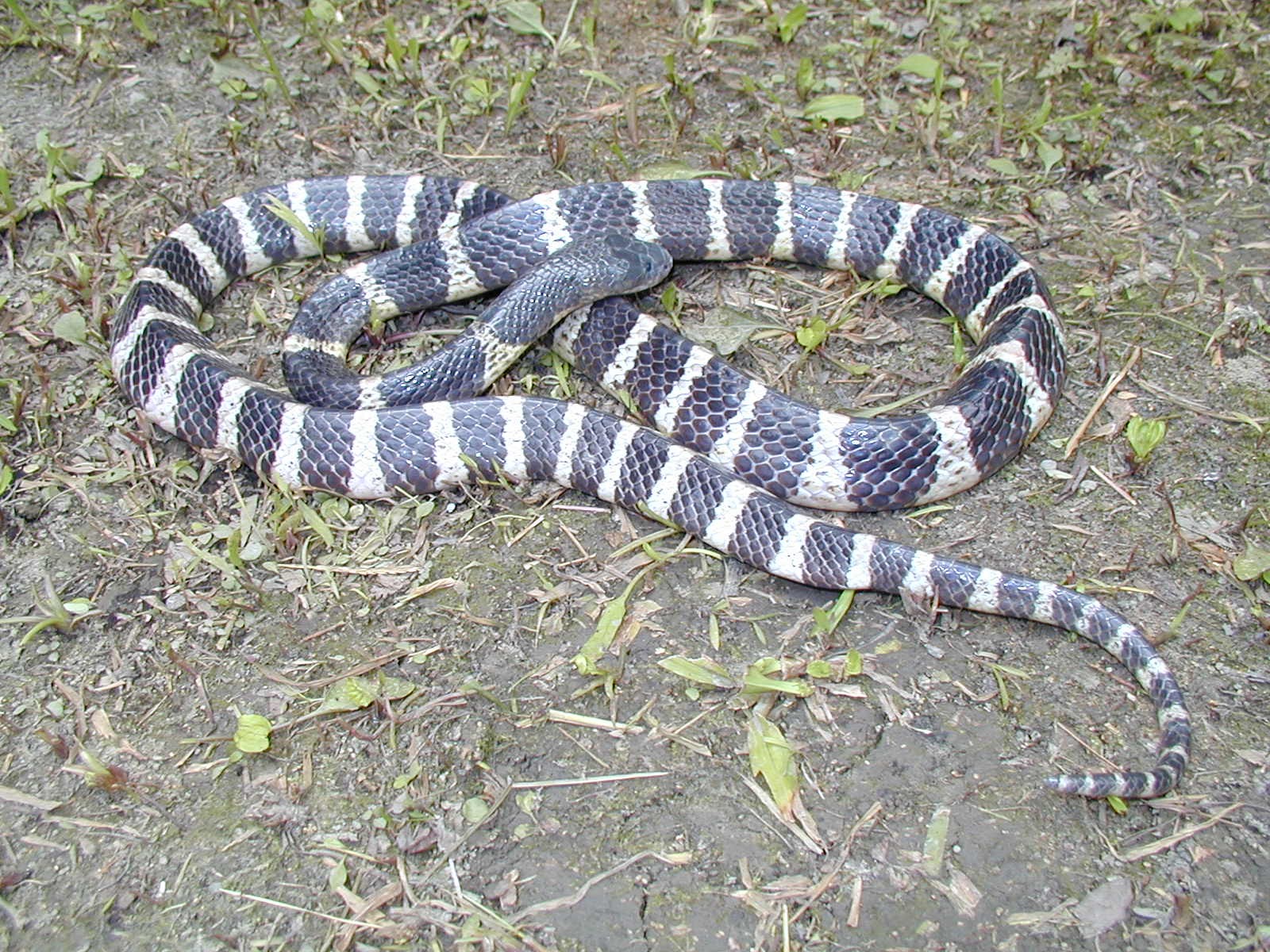 |
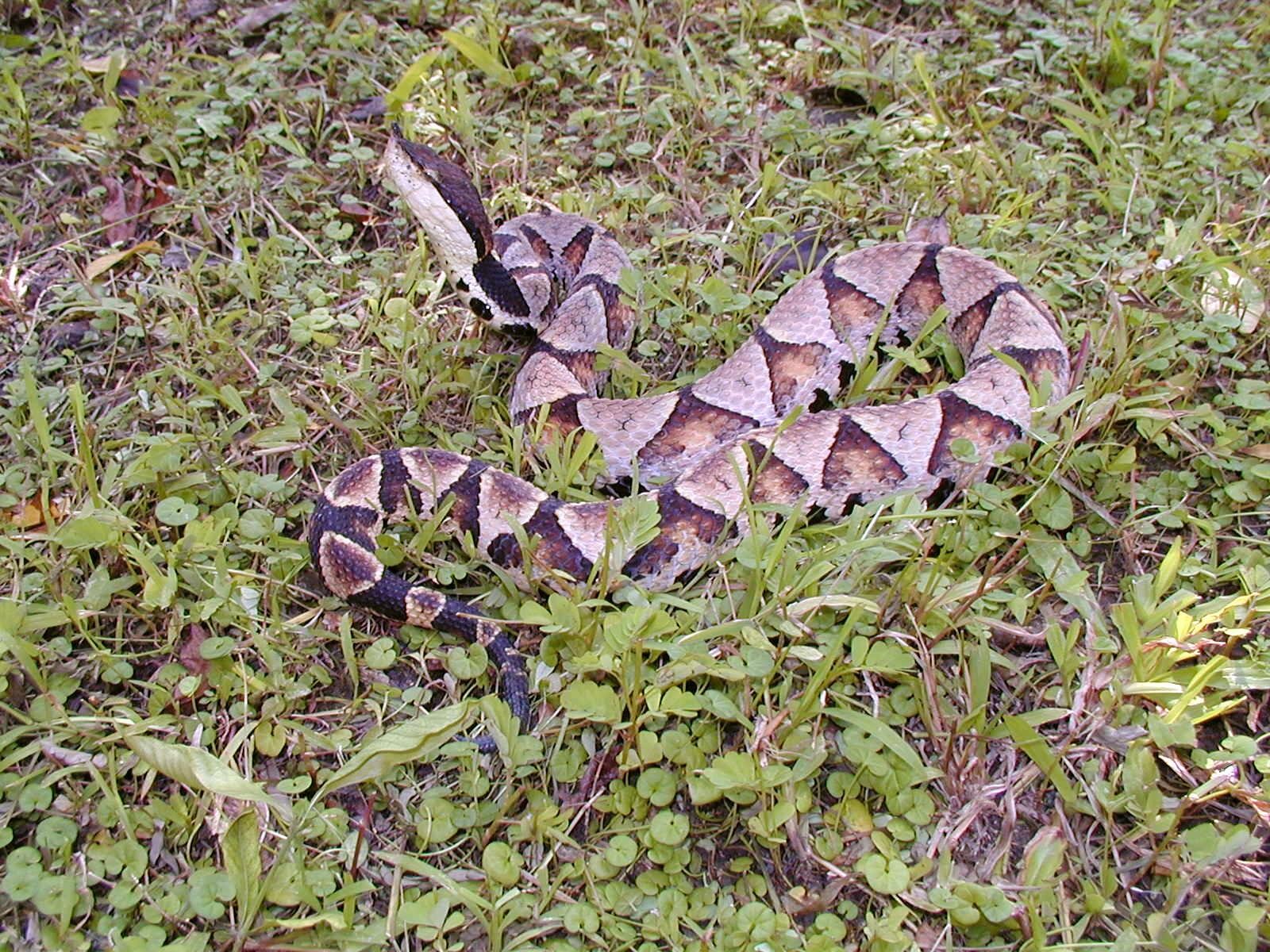 |
| Naja atra | Bungarus multicinctus | Deiagkistrodon acutus |
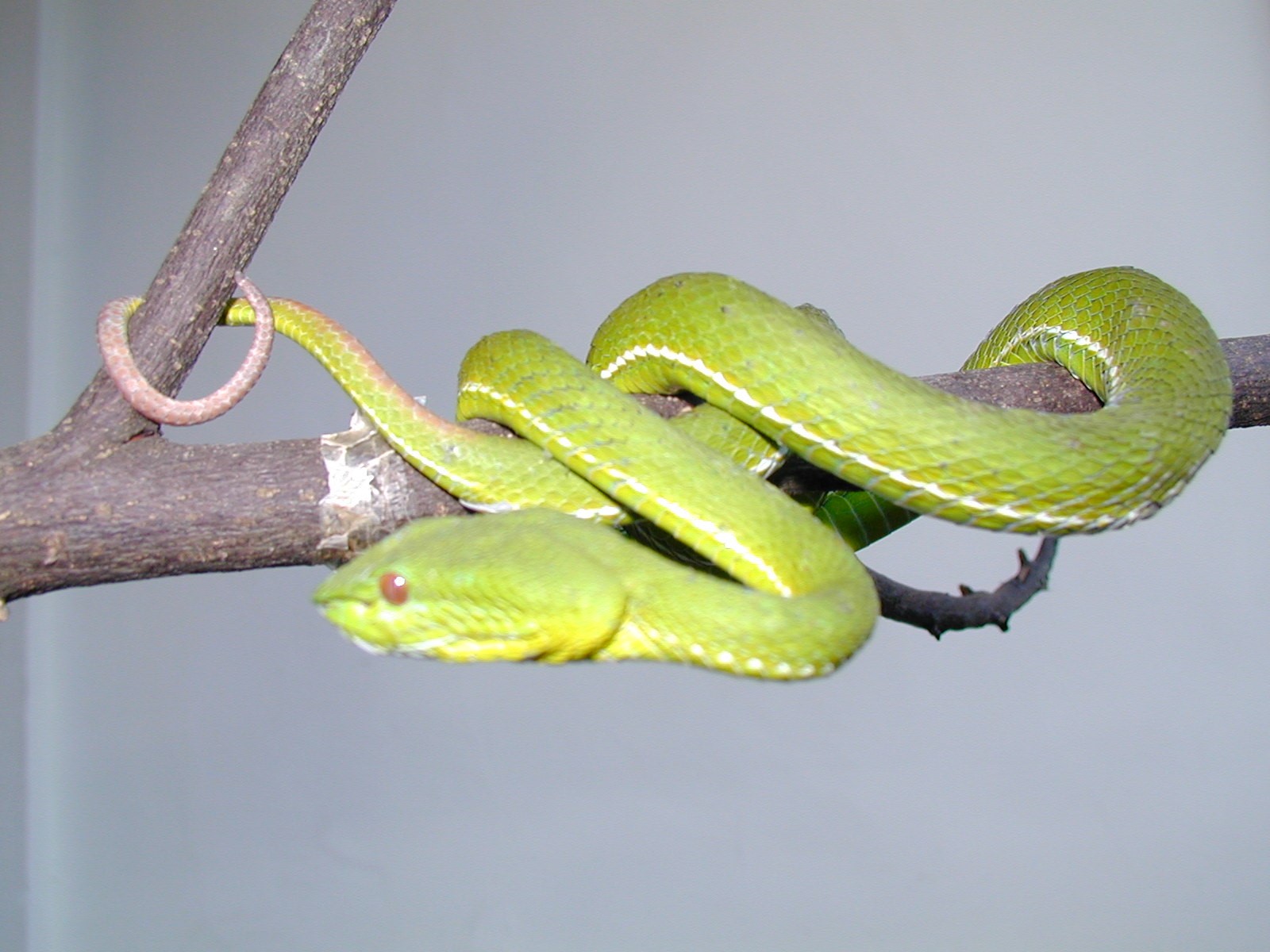 |
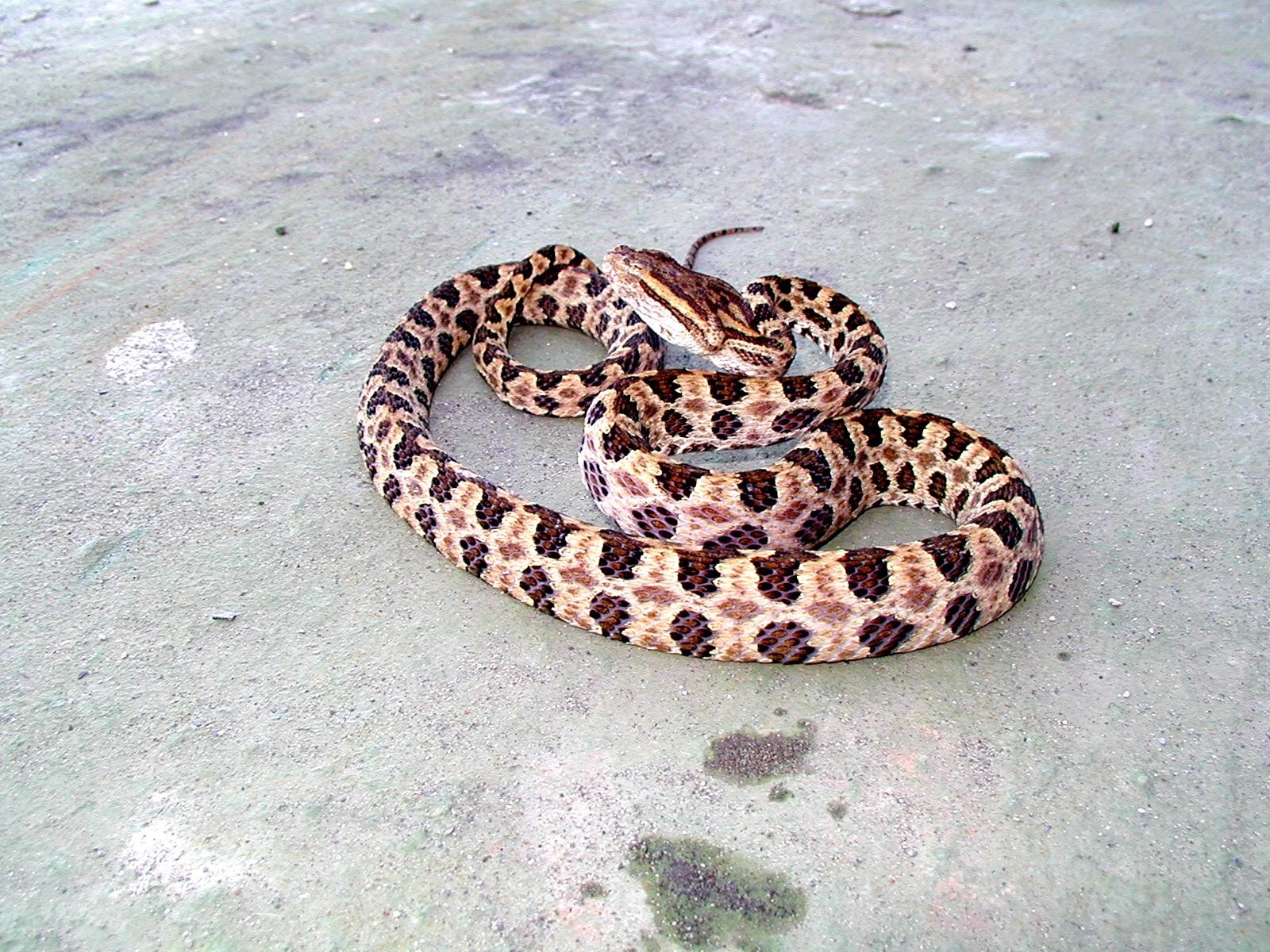 |
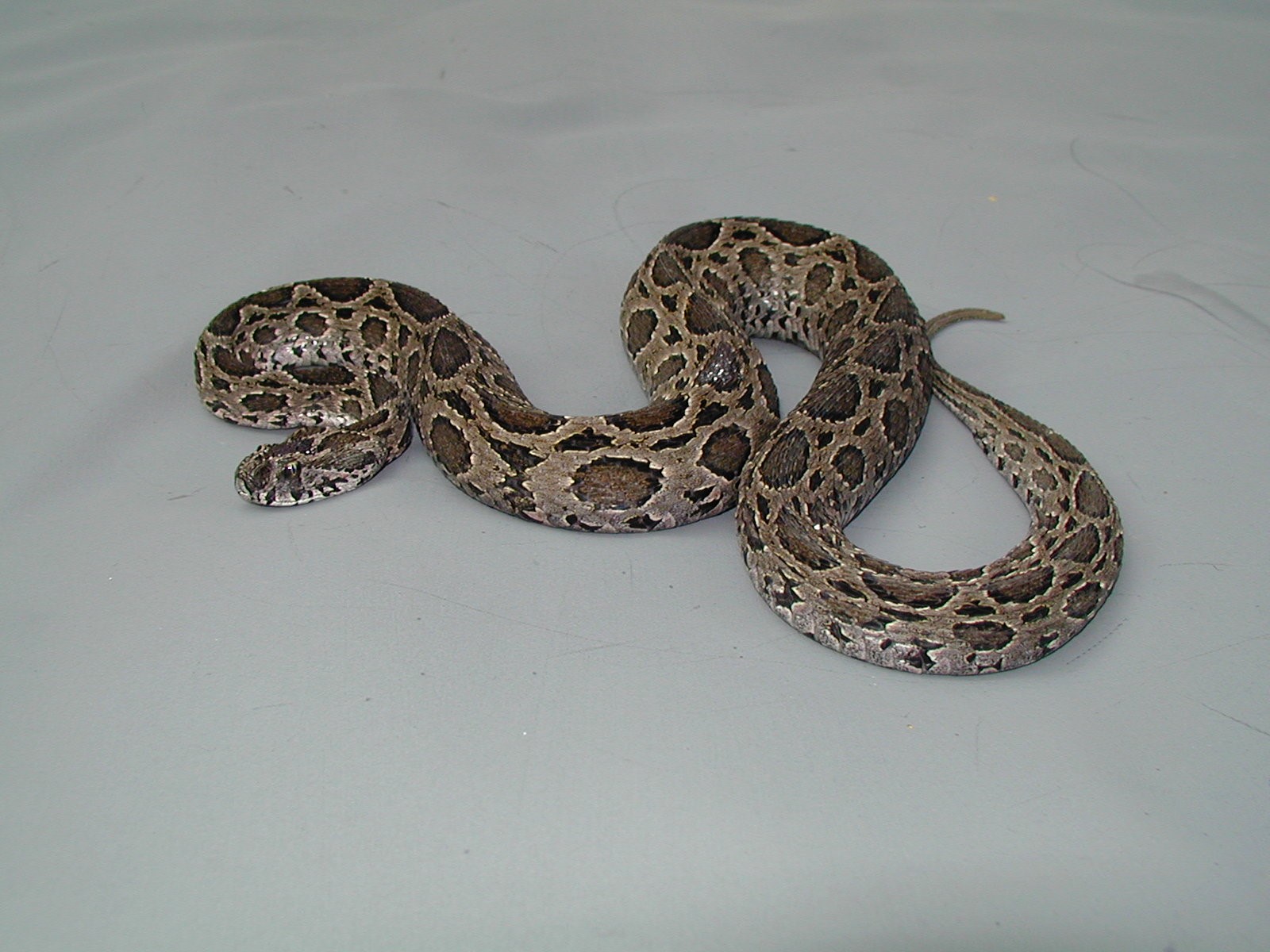 |
| Trimeresurus stejnegeri | Protobothrops mucrosquamatus | Daboia siamensis |

